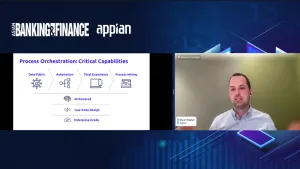
Asia Pacific banks brace for the IFRS 9 deadline of January 2018
Banks are urged to adopt new IT solutions to meet requirements.
According to research from integrated finance, risk and reporting technology vendor Wolters Kluwer, as the effective date of International Financial Reporting Standard (IFRS) 9 draws closer, it is not only banks that are busy making adjustments. The Basel Committee on Banking Supervision (BCBS) itself is currently conducting a consultation exercise on reconciling its framework with IFRS 9, particularly in terms of the treatment of provisions.
While the drive for consistency is to be welcomed, it is also likely to increase the pressure on banks across Asia and Australia -- particularly smaller retail institutions -- bracing for the IFRS 9 deadline of January 2018. Wolters Kluwer argues the time is right to adopt new IT solutions to meet the impending requirements.
Here's more from Wolters Kluwer:
The BCBS consultation is a consequence of the more forward-looking approaches to risk assessment embedded in IFRS 9 and the US Financial Accounting Standards Board’s Current Expected Credit Loss (CECL) standard, due to take effect two years later.
By basing provisioning requirements on expected credit losses (ECL) -- rather than recognizing losses when they are incurred -- these standards aim to strengthen bank credit risk management. As a result, however, banks will need to deploy new technology systems capable of handling the exacting new requirements.
And, due to the fundamental changes they will introduce to provisioning, these standards will have significant implications for regulatory capital provisions under the BCBS framework.
In particular, these accounting models do not distinguish between the specific provisions (SP) and general provisions (GP) defined in the Basel standardized approach (SA) to credit risk. This is the approach typically adopted by smaller banks, while larger institutions tend to employ internal ratings-based (IRB) approaches that reference their own risk parameters, Wolters Kluwer experts note.
“The ECL regime has the potential to significantly affect institutions’ capital ratios by forcing them to recognize impairments earlier and to set aside more provisions,” says Piet Mandeville, Singapore-based vice president of Financial Risk for Asia Pacific, at Wolters Kluwer.
“This is especially true for smaller banks pursuing growth strategies based on consumer lending products (e.g. credit cards) in fast-developing markets like Southeast Asia, as the default rates on these products tend to be higher and their credit deterioration can be difficult to define.”
Notably, however, it is clear many IFRS 9 implementations are already being delayed. This is backed up by a European Banking Association (EBA) study, for example, showing around half of institutions are still in the design stage -- a ratio that is likely even higher for smaller banks using SA.
This means the duration of the vital ‘parallel runs,’ in which banks simultaneously apply existing and IFRS 9 provisions approaches to analyze the impact on capital structure and business strategy, are likely to be squeezed even further.
“The BCBS exercise again highlights the period of uncertainty around capital measurement that IFRS 9 is set to usher in,” Mandeville adds. “This makes it more vital than ever that institutions adopt a phased, standardized approach to implementation, supported by technological solutions capable of running various models or scenarios simultaneously, and of ensuring consistency in the application of emerging policies and processes.”
















 Advertise
Advertise






